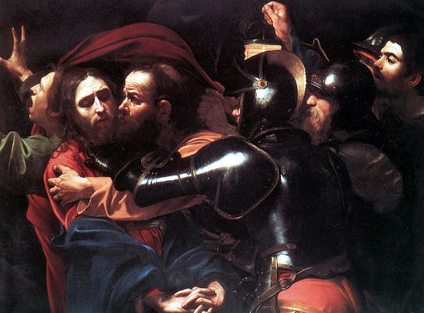When Bad People Make Art About Christ: At Least Mel Gibson Hasn't Stabbed Anyone! Yet!
by Michael Brendan Dougherty

I’ve lost count of how many times Mel Gibson has made a wreck of his life. The rants about Jews, his womanizing, his apparent mentorship of Britney Spears-and then the insane recordings where he pretty much admits to physically abusing his girlfriend. Former would-be censors of his film The Passion of the Christ have told us (rather gleefully) that the full revelation of Gibson’s twisted psyche vindicates their view that his film and memory should be erased from our memory and maybe burned on a pyre.
The idea that the private faults of the artist make their work too impure is of course a nasty religious impulse itself, common in early Calvinism and Islam.
In Frank Rich and Christopher Hitchens, we find a bizarro-world echo of The National Legion of Decency. The masses are too suggestible to view this material! Of course, there were no public orgies after And God Created Woman) just as there were no pogroms in Dubuque after The Passion.
Gibson’s latest troubles come just as the art press is filling up with tributes to Michelangelo Merisi da Caravaggio on the quadricentennial of his death. Gibson cited Caravaggio as a visual influence when he promoted his film. And the painter’s life was more troubled and more scandalous than Gibson’s (at least, so far)-and his depiction of the Passion just as filled with personal demons.
Caravaggio’s masterpiece, The Taking of Christ, was commissioned in 1603 by the Mattei family, then Rome’s richest estate outside the papacy. It was recognized as a classic immediately. Cook up your own breathless art-history descriptions about corruption seizing the innocent, and power destroying goodness. The action in the Garden of Gethsemane is compressed into a closeup, exploding with confusion and violence.
In that last respect it mirrored Caravaggio’s own life. Merisi was a hot mess. Frequently arrested for street fighting in Rome, he was notorious in a notorious city. It’s perfectly reasonable to believe The Taking draws its dark power from those rioting nights. Caravaggio’s friends were likely the models he used.
Three years after composing The Taking of Christ, Caravaggio murdered Ranuccio Tomassoni in one of his brawls, perhaps by accident. He skedaddled to Naples and lived under the protection of another rich family. He fled from patron to patron, hoping to find one with political connections powerful enough to obtain his pardon. Caravaggio was a brawler and a gory murderer, but no one suggests that his work glamorizes rioting, or trying to castrate rivals, or that we should avert our eyes lest we succumb to his same ignominious end.
I don’t mean to suggest that Gibson’s artistic talents are equivalent. The Passion of the Christ fails artistically in several respects where The Taking excels. Gibson’s slow motion scenes fail to invoke the iconography they aspire to become, the piercing of Christ’s side looks cartoonish and the whole thing occasionally feels like a revenge film with the ending cut short. Gibson’s peculiar obsessions are evident in The Passion-his fascination with physical brutality and punishment, his stereotyping.
Still, from Gibson’s faults come many of the film’s merits. Its brutal violence provides a corrective to sappy “My Boyfriend, Jesus” Evangelicalism, while its horrifying and lightning-fast transformation of Palm Sunday’s worshipful crowd into a bloodthirsty mob is an indictment of mass enthusiasms and by extension mega-church piety. Its manly Christ and angry deity speak to God’s justice in a world that presumes on cheap mercy. Roger Ebert praised it for doing away with prayer-card sentimentality.
Something to note: there are no sainted visual artists who could really paint. The Catholic Church commends St. John the Evangelist as the patron saint of artists, because his Gospel paints a heavenly picture. That’s a rather abstract suggestion. Perhaps a truly moving portrait of the price of sin requires someone well acquainted with his own faults. Gibson made his own hands the ones to nail Jesus to the cross. Caravaggio hid himself within the arresting party.
In any case, we should refuse to allow ideological and moral taboos to rob us of Wagner’s music, just as it would be absurd to allow the murder of Tomassoni to make us forget The Taking. In that same spirit, I’ll stand by Gibson’s lesser Passion even as I would join the arrest party ready to apprehend him. Just don’t ask me to defend The Man Without a Face.
Michael Brendan Dougherty is a contributing editor at The American Conservative. He has a new blog. He is trying to sell a book in lieu of a proper job.
